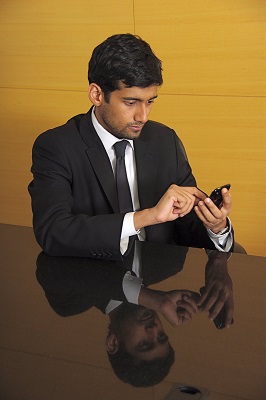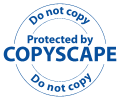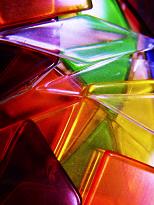Job
Interviews
The Power
in Clothing and Color Choices
for Job Interviews
Your choice of colors and clothing for job interviews, along with your personal presentation, can have a great impact on an interviewer’s first impression of you – this is established in the first 60 seconds of meeting you and is a lasting impression that is difficult to change. This is particularly important in today’s difficult and competitive job market so make it a good impression.
Don’t Underestimate the Importance of Your Choice of Color in Your Job Interview Clothing
Many people underestimate the power of the colours they wear for job interviews, but color sends a significant subconscious message to the interviewer about:
- your personality
It can convey your current level of professionalism and sophistication, your honesty and reliability, and your self-confidence.
What you wear for job interviews, or to work, is as much a calling card as any business card you may carry.
In What Type of Industry is the Job
You Are Applying for?

This will determine your clothing and color choices, as will your gender and the gender of the interviewer, and the subconscious messages you wish to send to the interviewer.
Before going to job interviews, find out as much as you can about the company for which you are applying for the job and look at the culture of the business. The key here is to dress to fit the culture and to dress one step above what you would usually wear in the position for which you are interviewing. Show you are serious about this job.
Is it a:
- Corporate, legal, accounting or financial services business – this requires a suit or classic dress in a conservative color - your best choice is a power color such as navy or dark gray – with a white shirt and a classic tie. Don’t wear distracting jewellery, colors or other attention-getting accessories.
How do I choose the right colors and what do those color choices mean?
For first job interviews, as a general rule, I recommend that you wear conservative colors such as navy blue, mid to dark gray, black or brown, in a suit (for both men and women) or a classic dress for women. Choose any of these conservative colours with a white, off-white or pastel blouse or shirt to soften the look, and add an accent of color to add energy and personality – for men this accent color will be in their tie, while for women it will be in their jewellery or a scarf.

Medium to dark colors are most business-like, authoritative and conservative and usually the best option for job interviews.
Lighter colors are friendlier and less threatening, but they lack power.
The more serious and high-powered the position you are applying for, the darker and more conservative the choice of color should be.
Colors and Their Meanings for Job Interviews
The following is a list of colors and their meanings - read this list to find which color or colors communicate the messages you wish to send out to your interviewer. Choose a base color such as dark blue, gray or black, for example, and add accents of color to show some of your personality.
Navy blue is probably the best option for first job interviews as it elicits a positive response from most interviewers. It is a professional color which adds an impression of authority, confidence, trust, honesty, loyalty, stability, reliability and credibility. Many bosses see it as the color of the team player.
Grey gives an impression of sophistication and professionalism. While it is a strong and powerful color, it is non-confrontational and does not distract – and it is less intimidating than black. Always add another color accent (not gray), in your tie, scarf or jewellery if you choose grey for a suit or dress.
Black is a powerful and authoritarian color that can be seen as sophisticated or intimidating. It is associated with strength and leadership and is a good choice for an interview in the legal sector – otherwise, use it as an accent color in a tie or scarf or jewellery.
Note: Although many young people love wearing black, they need to realize that wearing black is intimidating and aggressive and may cause the interviewer to become defensive. It can also put a barrier between them and the interviewer. At the same time, wearing some black can add confidence to an applicant who is a little unsure of them self.
Brown gives the impression that you are confident, dependable, reliable and flexible, but it can also be seen as dated and old-fashioned. It is a friendly and approachable color that works well for many industrial job interviews.
White suggests simplicity, organization and cleanliness. It is a great choice for a shirt or blouse to go with a navy, grey, black or brown suit.
Red is over-powering and attention-seeking and not suitable to wear to an interview except as an accent color. It exudes energy, passion and confidence as well as aggression, arrogance and anger. Use sparingly, especially for a first interview!
Maroon or burgundy is an acceptable form of red for a woman’s suit but not as good as navy, gray or black.
Green, yellow, purple and orange are distracting and memorable colors that are more suitable to creative or media jobs. Use these colors carefully as they don’t always elicit a positive response in job interviews. Green is sometimes viewed negatively as an untrustworthy colour, while orange can look unprofessional and cheap. Yellow and purple are associated with unusual creative types and often not liked by older males. Use these colors very sparingly for job interviews, if at all.
Women tend to react more positively to blue based colors, such as deep blue-reds, most blues, blue-greys, most pinks, and blue-greens. Use these colors when being interviewed by a female.
To men, the yellow based colors are more attractive. True reds and orange reds, peachy-apricot along with most blues are best. Use these colors if being interviewed by a male, but only in small quantities and as an accent color.
Blue is the most universally liked color, and it creates a positive response from both men and women. It is the safest color to use for job interviews as it is conservative and non-confrontational and loved universally by men and women in most cultures. This includes all blues, from light through to dark blue.
Fabric Choices
Plain colors are a better choice than patterned clothing, woven fabrics are better than knitted fabric, while matte colors and finishes are better than shiny, except in scarves and jewellery.
Common Mistakes Job Applicants Make
Not dressing appropriately for the position they are applying for –
while it is important to feel comfortable in job interviews, it is more
beneficial to the end result if you choose clothing colors based on the
desired response from the interviewer.
Wearing colors or clothing that shock, whether consciously or subconsciously – these colors may include magenta, hot pink, bright orange and bright yellow – use them in very small amounts, if at all.
Not being well-groomed – hair should be neat and tidy, nails trimmed and clean, clothing clean and pressed, shoes clean and polished, and deodorant worn at all times.
Wearing too much perfume or after-shave will leave a lasting impression, but not a favorable one!
Trying to be too trendy – tattoos, nose and eyebrow piercings, showing too much skin as in very short skirts and low necklines, and very high heels are all inappropriate for a professional job interview.
Basic Tips for Successfully Dressing for a Job Interview
If you have had a personal color analysis done and know your best colors, you can incorporate these into your clothing, for example in a shirt, scarf, jewellery or tie – otherwise, choose colors that reflect your own coloring, for example green if you have green eyes, blue if you have blue eyes.
Take pride in your appearance – make sure your shoes are clean and polished, no body piercings, and cover any tattoos for all job interviews. Remember that often the interviewer may be older and more conservative so be careful you don’t offend with your appearance.
Play it safe and dress in tailored, structured and classic clothing, unless you are applying for a very creative job. Dress conservatively and understated – this doesn’t usually offend anyone.
Choose conservative, neutral colors rather than bright colors – medium to dark colors in blue, grey, black and brown are the most conservative and authoritative. Add small accents of other colors to show your personality. Read the previous information on what colors mean to make your choices.
For men:
For women:
- A skirt suit or classic dress is best for professional job interviews, while a pant suit is suitable for less professional types of jobs.
- Wear minimal makeup and no chunky jewellery – keep it understated and minimal.
- With accessories, less is more, when going for a job interview.
- Have a neat and professional hair style.
- Wear light or skin colored hosiery with conservative shoes that match your clothing, or just plain black shoes.
- Be modest – wear classic tailored clothing - no plunging necklines, no tight clothing and no short skirts.
- Wear subtle nail polish, or no nail polish at all, and remember to check that the polish is not chipped and that your nails are clean.

Remember, these choices are just for the interview and to help you get the job – once you have it, you can dress more to suit your personality and the everyday culture and expectations of your new employer.
Of course, along with the right job interview clothing, you also need the skills, experiences and qualifications required for the job, as well as good interview techniques.
Remember to speak clearly and confidently, make eye contact, don’t put your hands in your pockets and turn off your mobile phone before the interview!
And be memorable for the right things!!
Matthew Knight from www.searchlaboratory.com commented:
“Interviews are tough – it’s an inescapable fact. There is simply so much to consider. You want to appear knowledgeable about the company and the industry, demonstrate the required skills, and talk fluently about your experience. In preparation, you can meticulously research the company, compile examples that prove you meet the criteria, and make a list of questions that illustrate your interest in the company and a desire to remain there on a long-term basis. In addition to that, you need to ensure your posture, body language, eye contact and tone of voice are all correct. Your presentation is also extremely important, and your choice of clothing can have a significant impact on the outcome of the interview.
After speaking to top clinical psychologist Dr. Jennifer Baumgartner last year about the psychology of dressing for work, I decided to further explore the subject of dressing for job interviews – from a psychological perspective. I collated 8 fascinating studies and interviewed a clinical psychologist, two leading image consultants, an expert in graduate recruitment, a top fashion writer, a tailor and a top colour psychologist – Judy!
Judy, amongst other interviewees, gave me some incredibly insightful answers, and I feel the eBook is a great guide for young graduates and veterans alike.”
To read Matthew’s interview with Judy, here is the link:
http://blog.grads.co.uk/2014/04/03/colours-work-interview-situation/
To return to the Home Page
Like to join our Facebook community?


New! Comments
Have your say about what you have just read! Leave me a comment in the box below.